What Is Chicken Mole Sauce? Unraveling the Flavorful Enigma
So you’ve heard whispers about this magical Mexican sauce that somehow combines chocolate, chilies, and spices into a rich, velvety masterpiece. If you’re asking “What is chicken mole sauce?”, you’re not alone — even seasoned spice lovers can be puzzled by its complex flavor profile.
In this blog post, we’ll take a deep dive into the origins, ingredients, variations, and cooking tips for this iconic dish. Spoiler alert: it’s more than just “chocolate chicken.”
Table of Contents
- A Brief History of Mole
- The Spice-Packed Ingredients Behind Mole Sauce
- How Chicken Fits Into Mole
- Types of Mole (and Why One Tastes Like Dessert)
- Pro Tips for Making Your Own Chicken Mole at Home
- Serving Suggestions and Food Pairings
- Mole Myths Busted: No, It Doesn’t Always Taste Like Chocolate
- Summary: What Exactly Is Chicken Mole Sauce?
A Brief History of Mole
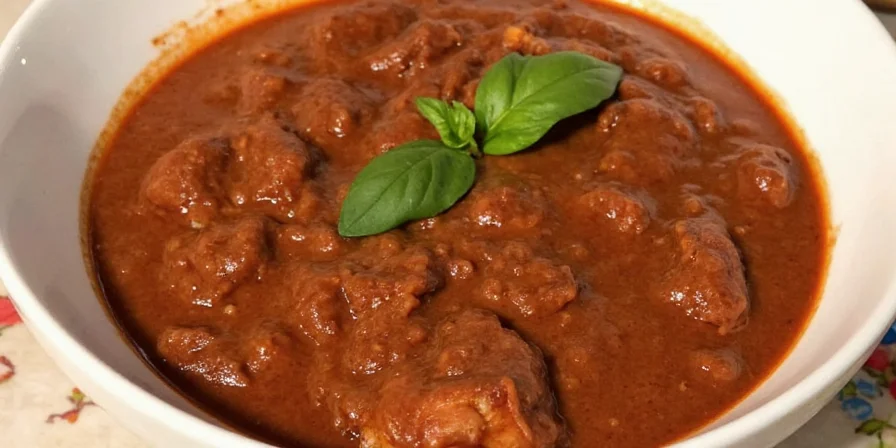
Mole isn’t just a sauce — it’s a celebration of Mexican culinary fusion. Its roots stretch back to pre-Hispanic times, where indigenous cooks used local chilies, seeds, and spices to create sauces for meats. When Spanish colonizers arrived, they brought new ingredients like almonds, cinnamon, and yes… chocolate.
Legend has it that mole poblano was created by nuns in Puebla when they needed a last-minute dish to impress a visiting bishop. They threw together what they had — and voilà! A legend was born.
The Spice-Packed Ingredients Behind Mole Sauce
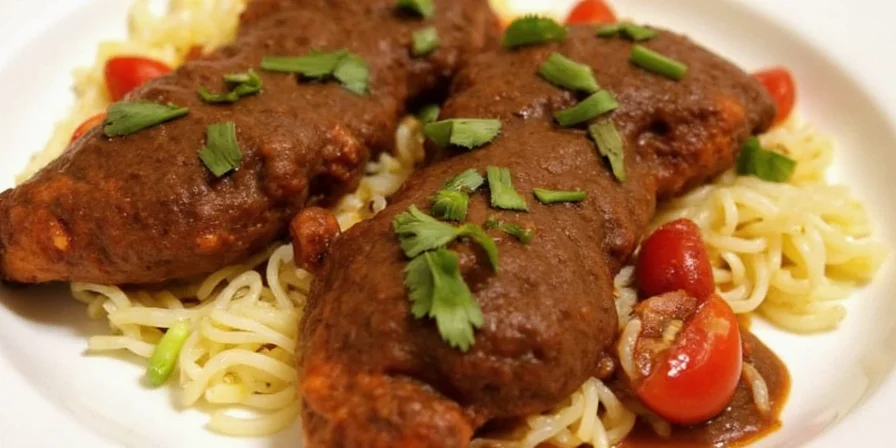
Let’s break down what makes mole sauce so unique. Here’s a typical list of components:
- Chilies: Ancho, pasilla, mulato — each brings a different heat level and flavor note.
- Chocolate: Usually unsweetened or semi-sweet to balance the chilies’ bitterness.
- Spices: Cinnamon, cloves, cumin, anise — these give depth and warmth.
- Nuts & Seeds: Almonds, sesame seeds, peanuts — add richness and texture.
- Tomatoes & Garlic: For brightness and savory foundation.
- Bread or Tortillas: To thicken the sauce and round out flavors.
- Sugar or Fruit: Sometimes raisins or plantains are added for sweetness.
| Ingredient | Flavor Contribution | Typical Type |
|---|---|---|
| Ancho Chili | Smoky, sweet, mild | Dried chili pepper |
| Cinnamon | Warmth, earthy | Ground bark |
| Unsweetened Chocolate | Bitterness, complexity | Cacao solid |
| Sesame Seeds | Nutty, oily texture | Toasted seeds |
| Almonds | Richness, creaminess | Blanched and toasted |
How Chicken Fits Into Mole
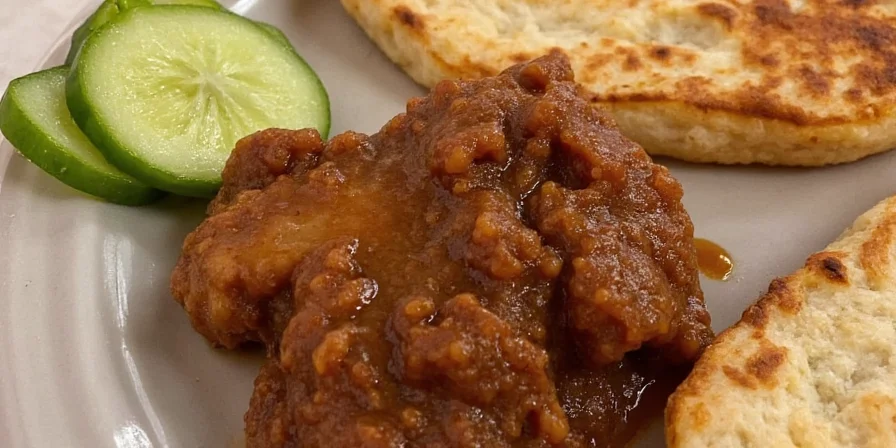
Now, onto the main question: What is chicken mole sauce exactly? Well, it’s typically a slow-cooked sauce poured over simmered or roasted chicken. The chicken itself is usually poached gently in broth first to keep it tender, then bathed in warm mole sauce before serving.
The pairing works beautifully because:
- Chicken acts as a neutral base, letting the bold mole shine.
- The richness of mole complements leaner cuts like breasts or thighs.
- It’s versatile — serve it over rice, with tortillas, or alongside tamales.
Types of Mole (and Why One Tastes Like Dessert)
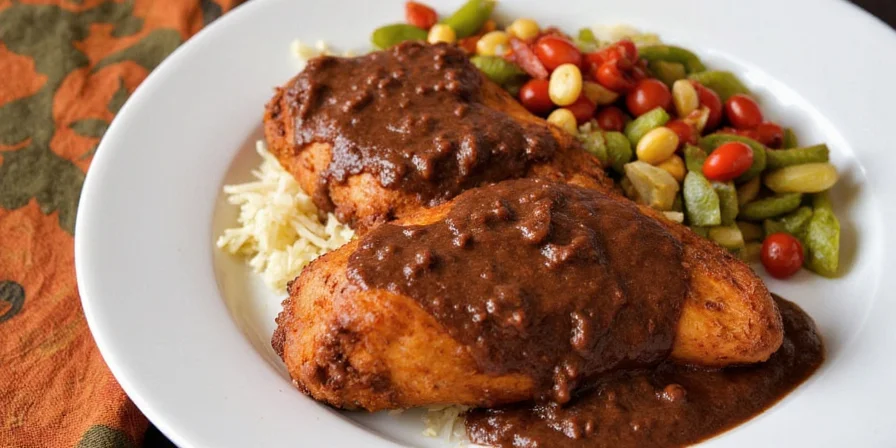
Did you know there are over 50 documented varieties of mole in Mexico alone? Here are some popular ones you might encounter:
| Type of Mole | Origin | Main Flavors | Heat Level |
|---|---|---|---|
| Mole Poblano | Puebla | Chocolate, nuts, chili | Medium |
| Mole Negro | Oaxaca | Roasted, smoky, coffee-like | High |
| Mole Verde | Oaxaca | Herbaceous, fresh, green chilies | Low |
| Mole Amarillo | Oaxaca | Yellow chili, tropical fruit | Medium |
| Mole Ranchero | National | Tomato-based, rustic | Low to medium |
Pro Tips for Making Your Own Chicken Mole at Home
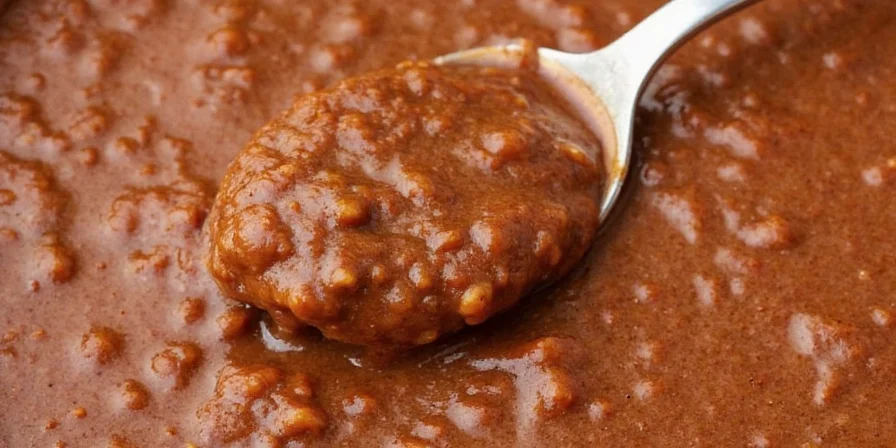
If you're feeling adventurous, here are some pro-level tricks to nail your mole:
- Toast Everything First: Toast chilies, spices, and seeds in a dry pan to bring out their natural oils and aroma.
- Rehydrate Chilies Carefully: Soak dried chilies in hot water until soft, but don’t overdo it — you want concentrated flavor.
- Blend in Stages: Blend the sauce in batches to avoid burning your blender motor. Strain through a fine sieve for smoothness.
- Add Chocolate Last: Melt it slowly off-heat to prevent seizing or clumping.
- Taste and Adjust: Balance the acidity, sweetness, and salt gradually. Some say a splash of vinegar or a pinch of sugar does wonders!
- Simmer It Low and Slow: Letting the sauce cook gently for 30–60 minutes lets all the flavors marry together beautifully.
Serving Suggestions and Food Pairings
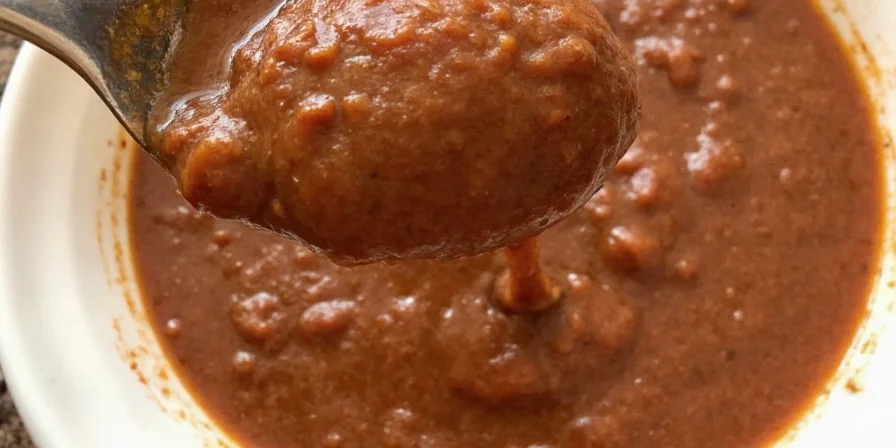
Mole pairs incredibly well with:
- Steamed White Rice: Absorbs the sauce like a dream.
- Warm Corn Tortillas: Wrap up some mole-soaked chicken for a soul-warming taco.
- Boiled Potatoes: Adds a starchy contrast that balances richness.
- Fruit Salsas: Pineapple or mango salsa cut through the heaviness with brightness.
- Eggs: Try it over huevos rancheros — it's a breakfast game-changer!
Mole Myths Busted: No, It Doesn’t Always Taste Like Chocolate
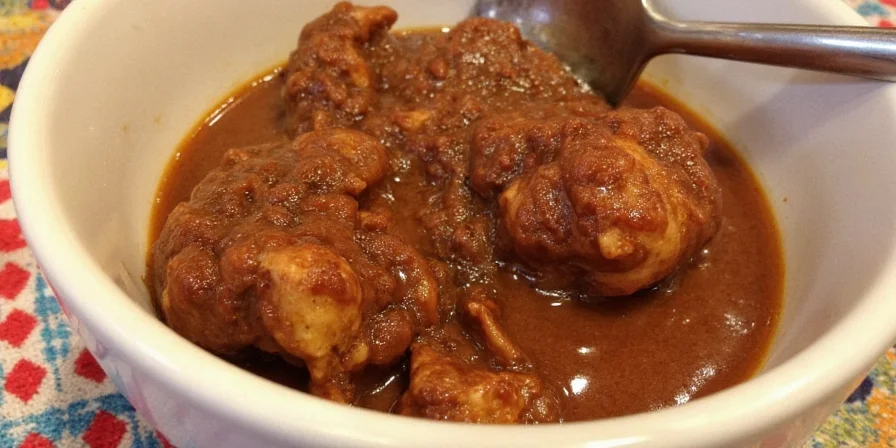
Let’s clear up some confusion around mole sauce once and for all:
- Myth 1: All mole contains chocolate
Truth: Only certain varieties (like mole poblano and mole negro) use chocolate. Others, like mole verde, are completely chocolate-free! - Myth 2: Mole is always sweet
Truth: While some versions have a touch of sweetness, most are savory-forward with hints of smoke, spice, and earthiness. - Myth 3: Mole takes all day to make
Truth: Yes, traditional recipes can take hours — but modern shortcuts exist! Use pre-ground spices or a pressure cooker to save time. - Myth 4: Mole is only for special occasions
Truth: Sure, it’s festive, but there’s no reason you can’t enjoy mole on a random Tuesday night.
Summary: What Exactly Is Chicken Mole Sauce?
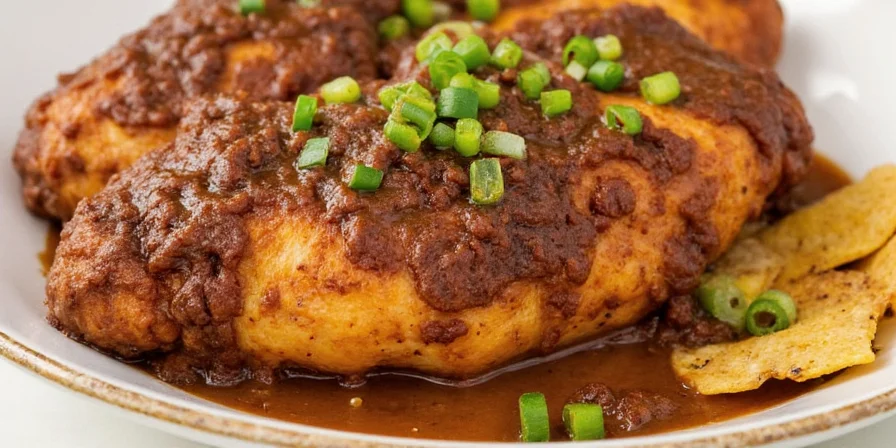
So, to wrap things up:
- Chicken mole sauce is a rich, layered sauce made from chilies, spices, nuts, and sometimes chocolate.
- It’s traditionally served over chicken and is a staple in Mexican cuisine, especially in regions like Oaxaca and Puebla.
- Despite common belief, not all mole includes chocolate, and the flavor is far more complex than just “spicy chocolate sauce.”
- You can make it at home with patience and the right ingredients — or customize it to suit your taste preferences.
- Pair it with rice, tortillas, or even eggs for a delicious meal that honors tradition with every bite.
Final Thought
If you've ever wondered “What is chicken mole sauce?”, now you know: it's a spicy, nutty, slightly mysterious love letter from Mexican kitchens to your taste buds. And honestly? Once you try it, you’ll never look at “chili and chocolate” the same way again.

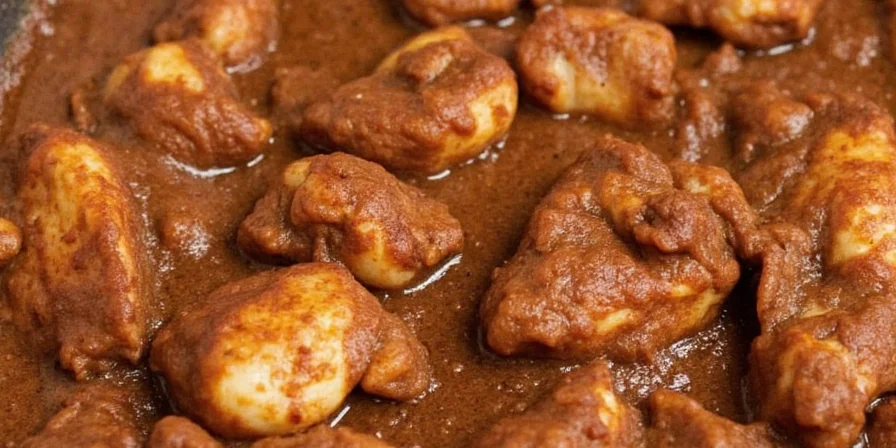









 浙公网安备
33010002000092号
浙公网安备
33010002000092号 浙B2-20120091-4
浙B2-20120091-4